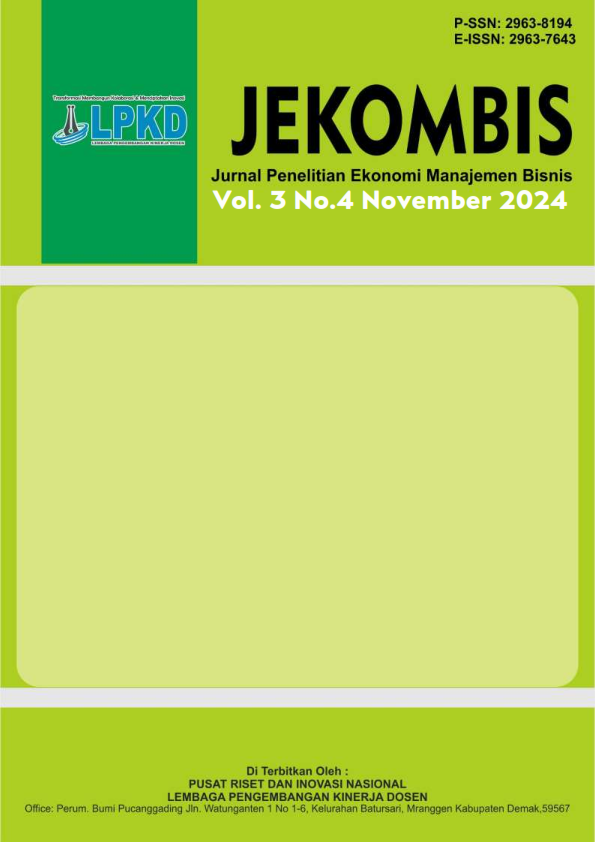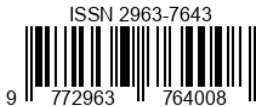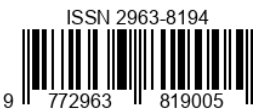Strategi Pemasaran Usaha Mandiri Berbasis Pemberdayaan Limbah Daun Ketapang
(Studi di Wisata The Pikas Artventure Banjarnegara)
DOI:
https://doi.org/10.55606/jekombis.v3i4.4436Keywords:
Marketing Strategy, Independent Business, Empowerment of Ketapang Leaf Waste, The Pikas Pikas Artventure BanjarnegaraAbstract
The Pikas Artventure in Banjarnegara, located on the banks of the long and wide Serayu River, offers nature tourism including rafting, outbound, paintball, and river camping. Established in 2009, this tourist attraction is known as a pioneer of rafting on the Serayu River. Utilizing ketapang trees that grow in tourist areas, ketapang leaf waste that is usually not used is now processed into valuable products, such as liquid to balance the pH of the water used in ornamental fish farming. This opens up new business opportunities that have a positive impact on the surrounding community. This study aims to explore the business marketing strategy based on waste empowerment in The Pikas Artventure, using a qualitative approach and descriptive-analytical analysis techniques. By implementing B2B, B2C, and C2C marketing strategies, ketapang leaf liquid products have been successfully marketed locally and online, expanding the market reach around Banjarnegara. The study also identified barriers, such as staff shortages, that affected services, as well as offering solutions such as increasing headcount and developing internal communications.
Downloads
References
Ahmad Sholihin Ifham. (2010). Buku pintar ekonomi syariah. PT Gramedia.
Al Arif, M. N. R. (2010). Dasar-dasar pemasaran bank syariah. CV Alfabeta.
Freeman Stoner, J. A. F., R.E., & Gilbert, D. R., Jr. (1997). Strategi pemasaran. Dalam Fandy Tjiptono. Andi.
Hermawansyah. (2017). Analisis parameter fisik kompos menggunakan metode vermikomposting pada sampah daun kering.
Iskandar Wassid, & Sunendar, D. (2013). Strategi pembelajaran bahasa remaja. Rosdakarya.
J. Purwani. (2011). Pemanfaatan Tithonia diversifolia (Hamsley) A. Gray untuk perbaikan tanah. Jurnal Gray untuk perbaikan tanah. Balai Penelitian Tanah.
Jakfar, & Kasmir. (2003). Studi kelayakan bisnis. Prenada Media.
Kertajaya Hermawan, & Sula, M. S. (2006). Syariah marketing. Gema Insani.
Kotler, P. (1997). Marketing management: Analyzing, implementation, and control. Prentice Hall, Inc.
Kotler, P., & Keller, K. L. (2009). Manajemen pemasaran. Jakarta: Indeks.
M. Ismail, & Widjaja Kusuma, M. (2003). Management strategis perspektif syariah. Khairul Bayan.
M. Reza. (2020). Pengaruh kompos daun bambu dan NPK 16:16:16 terhadap pertumbuhan dan produksi tanaman bawang merah (Allium ascalonicum L.) [Skripsi]. Fakultas Pertanian, Universitas Islam Riau.
Perez, A., et al. (2010). Phytochemical and pharmacological studies on Mikania micrantha H.B. K. Experimental Botany.
Rangkuti, F. (2005). Analisis SWOT: Teknik membedah kasus bisnis. PT Gramedia Pustaka Utama.
Saefudin Maefta. (2020). Diakses pada Selasa, 15 November 2022, pukul 01:00 WIB.
Supratikno Hendrawan. (2003). Advanced strategic management: Back to basic approach. PT Grafindo Utama.
Swastha Basu, D. H. (1999). Azas-azas marketing. Liberty Offset.
Umar Husein. (2010). Desain penelitian manajemen strategik dan manajemen strategik. Jakarta: Rajawali Press.
Downloads
Published
How to Cite
Issue
Section
License
Copyright (c) 2024 Jurnal Penelitian Ekonomi Manajemen dan Bisnis

This work is licensed under a Creative Commons Attribution-ShareAlike 4.0 International License.







